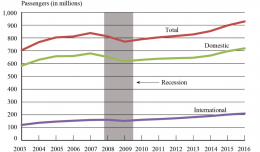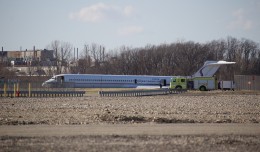In the news this week, we learned about the loss James Horner, composer of the score from Titanic. Many of the comments sections of news websites are abuzz with the usual disrespectful comments and folks speculating about things they do not know much about. For example, a common refrain (pun not intended) is “How could they not know he was dead? His plane crashed and they found a body!”
Like so much to do with aviation and forensics, it’s not as simple as that. I’d like to use my background as both a former deputy coroner and an aviation crash survivability researcher to help dispel some of the misunderstandings. The first one is the use of circumstantial evidence to imply the death of someone. The second is the reality of forensic identification versus what you might have seen on television.
Fake it until you make it
Anyone who has watched much television or movies should be well aware of the idea of someone faking his own death. Now I am not in any way, shape, form or fashion implying this is the case here. However, it does perfectly demonstrate why no developed nation takes the argument that “It’s his plane, so it’s his body” without independent corroboration. To those who would argue that there is a low risk of faking one’s death in a plane crash or otherwise there being a misunderstanding, consider the case of Marcus Schrenker, who bailed out of his plane in an effort to escape from criminal charges from being a con artist.
 If you do not remember him, his flight in January of 2009 held the hope that everyone would assume he was dead after his plane crashed into the Gulf of Mexico, presumably never to be found. Much to his eternal chagrin (or at least the chagrin of the next fourteen years he will spend in prison), the plane came down and was quickly found. Thus, his plan was foiled although reports fail to clarify whether meddling kids and their Great Dane were involved or not.
If you do not remember him, his flight in January of 2009 held the hope that everyone would assume he was dead after his plane crashed into the Gulf of Mexico, presumably never to be found. Much to his eternal chagrin (or at least the chagrin of the next fourteen years he will spend in prison), the plane came down and was quickly found. Thus, his plan was foiled although reports fail to clarify whether meddling kids and their Great Dane were involved or not.
There was also a murder in the 1970s that went to trial a couple decades later in which the defense put forth quite an alternative theory. The murderer claimed his victim had gone to Chicago O’Hare airport and boarded American Flight 191 which crashed upon takeoff. Even in the days before airline security became the fully anal retentive exercise that it is today, someone not being on the flight manifest and their remains not being found in the wreckage from the crash is what we in forensics call a “clue.”
Thus, in modern forensics, you cannot identify a body quite so simplistically. In most states — including my own home state of Indiana — it is actually not allowed by law. There are several acceptable ways of achieving this and they have varying degrees of applicability to aviation related deaths.
Seeing is believing
The easiest way, if only for the investigators, is a visual identification. This is what it sounds like: a member of the family recognizes the victim either from his face or from a very unique tattoo. They sign a paper that says something to the effect of “I am John Doe, [insert relationship to victim], and swear under penalty of perjury and possibly other crimes that the body in question is [insert name of the victim].”
When it comes to identification of tattoos, what constitutes “unique” may vary from jurisdiction to jurisdiction but my general rule was that if the family can describe the tattoo in decent detail and location before being told about it (example: as a response to the general non-leading question: “Did Bob have any tattoos?”). In some cases, the tattoo is so odd that it is pretty much going to be more reliable than a generic one. The best example I have encountered of this was a guy who had two Tommy guns and some dice along with portraits of Humphrey Bogart, James Cagney and John Dillinger tattooed very artistically across his abdomen with the declaration “**** YOU, PAY ME.” It was a colorful tattoo in more ways than one.
While we are on the subject of visual identifications, I would like to clarify a common misconception about the process. In most jurisdictions, this is done by showing the family member(s) a photograph of the victim or of the tattoo in question and not, as is commonly shown on television, bringing them to the morgue and pulling back a sheet or curtain to reveal the victim. It does happen in some places but it is not as common as Hollywood would like you to believe.
This brings me to the limitations of this method. As one might imagine, aircraft crash victims frequently are not visually identifiable. This is not to say that they all are reduced to unrecognizable fragments or anything like that, but that the idea that most crashes destroy the body are false. I can’t give a good statistic, but more often than not, at least in general aviation crashes the body is recognizable as a person and reasonably intact. However, that is not the same as saying it is recognizable as a specific person or in a condition that should be shown to people who care about that particular person.
This is where we get into the scientific methods of identification. These can be standalone independent identification methods or to back up a visual identification. In fact, before we move on, I should point out a case that demonstrates the fallibility of visual identification. It also points out why a wise investigator will try to back up a visual identification with scientific methods, especially if there is more than one victim involved or where the case is likely to attract a lot of media attention. In April of 2006, a van carrying university students in Indiana collided with a tractor-trailer. There were two young women on board who were physically similar in appearance with one being dead on the scene and the other critically injured. In the confusion of the scene, a mix-up occurred which was not recognized until the survivor was able to communicate several weeks after the crash. The matter was finally settled by comparison of the deceased’s teeth with dental records.
A fine “tooth” comb
Dental records are common in many developed countries and thus form a relatively easy way of identifying victims. More often than not, it comes down to a comparison between factors such as the presence or absence of specific teeth, the location and type of restorations (fillings, crowns, bridges, etc) and the shapes of teeth. In the hands of an experienced forensic odontologist (the fancy term for a dentist with training and experience in forensic identification), it is a quick and accurate way of ascertaining an identification. This is probably one of the most common methods used in aircraft crashes simply because teeth are so difficult to destroy. They are well protected against trauma and will resist all but the most prolonged fuel-fed post-crash fires.
Comparisons can be made either visually or by radiographs (x-rays), although in many cases, a combination of the two is used. Visual comparison can be done either by using a mirror intra-orally (just like when you go to the dentist), small camera, or in cases where the victim is burned or otherwise massively disfigured, by removing the jaws and examining them.
Answers are at your fingertips
Fingerprints are another common way of identification and have been used for well over a hundred years. Contrary to what one sees on television, the process of final identification in most cases is not done by a computer. Instead, it is left to an examiner carefully comparing various points on the prints derived from the remains versus a set that are known to come from a person suspected to have died. The use of automated computer databases can help narrow down the possibilities and lighten the examiner’s workload, but it is always verified.
Interestingly, fingerprints are not the only kind of prints that can be used to identify a victim. Prints from the palms of the hands, feet, the ears and even the lips can be used to determine identity. For most individuals, there exists no comparison data which limits the number of cases in which they can be used.
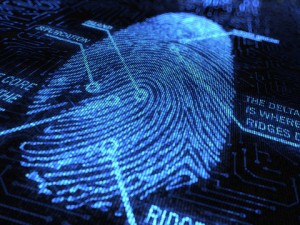 The usefulness of fingerprints in aircraft crashes is somewhat limited by the frequency of post-crash fires. Given that fingerprints are nothing more than the ridges of the skin, anything that destroys the skin renders it unable to be fingerprinted. Burns are a classic example of this. On the contrary, one might suspect that decomposition, such as might be encountered when a crash is not found for some time or when a body is not recovered from a body of water, might hamper the use of fingerprints. In extreme cases, this may be true, but there are a multitude of examples where years or even decades have passed with successful fingerprint identification. The best example was the recovery of a forearm and hand from a commercial airline crash into a mountain and glacier in Alaska. The crash occurred in 1948 and the hand was found in 1999. Years later in 2007, the victim was identified by fingerprints from his service in the United States Merchant Marines.
The usefulness of fingerprints in aircraft crashes is somewhat limited by the frequency of post-crash fires. Given that fingerprints are nothing more than the ridges of the skin, anything that destroys the skin renders it unable to be fingerprinted. Burns are a classic example of this. On the contrary, one might suspect that decomposition, such as might be encountered when a crash is not found for some time or when a body is not recovered from a body of water, might hamper the use of fingerprints. In extreme cases, this may be true, but there are a multitude of examples where years or even decades have passed with successful fingerprint identification. The best example was the recovery of a forearm and hand from a commercial airline crash into a mountain and glacier in Alaska. The crash occurred in 1948 and the hand was found in 1999. Years later in 2007, the victim was identified by fingerprints from his service in the United States Merchant Marines.
In a rather unpleasant way, in more modern cases where decomposition is a factor, a common feature of the decomposition process actually aids in fingerprinting victims. While most people think of the process as just the body turning into a skeleton in a puddle of unrecognizable goo, it is a complex and rather fascinating series of steps. The one in question involves skin slippage. The easiest way to explain this is to draw a comparison to how one can remove the skin from a chicken before cooking it. The skin slides off of the underlying tissue as the connections break down. This leaves you with a “glove” of sorts that can be fingerprinted. In at least one case of a commercial aircraft crash into the ocean, divers I have spoken with who were involved described finding such “gloves” on the bottom along with the wreckage in a very macabre scene. Unpleasant to think about but such is the reality of working around disasters.
These “gloves,” which may involve the entire hand or be limited to a fingertip, are then placed over the hand of someone working in the morgue. Before anyone asks, yes, we wear gloves during this. The fingers are inked and the prints “rolled” just like anyone being booked by the police. Gruesome, but it is effective.
You are NOT the father
The last of the common identification techniques that is used in aviation related deaths is DNA analysis. Actual laboratory and statistical processes used to obtain results are incredibly complex and continuously evolving. Thus, we’ll focus on the sorts of tissues that can be used to identify a victim and less on the laboratory techniques.
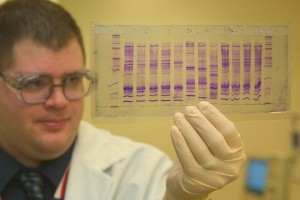 As nearly anyone who has watched television in the past few years is aware, every cell in your body contains some form of DNA. There are two major forms of it: nuclear DNA and mitochondrial DNA. Nuclear DNA is the one most people think of. It is the type that is the “blueprint of life” and allows you to clone sheep, mice and anything else that the depths of your pockets and the legalities of your home country will allow (think “Jurassic Park”). It is relatively fragile and is a composite of the genes of the mother and father of the person (think “Maury, I know I ain’t the father!”), sheep or genetically modified dinosaur rampaging across your island.
As nearly anyone who has watched television in the past few years is aware, every cell in your body contains some form of DNA. There are two major forms of it: nuclear DNA and mitochondrial DNA. Nuclear DNA is the one most people think of. It is the type that is the “blueprint of life” and allows you to clone sheep, mice and anything else that the depths of your pockets and the legalities of your home country will allow (think “Jurassic Park”). It is relatively fragile and is a composite of the genes of the mother and father of the person (think “Maury, I know I ain’t the father!”), sheep or genetically modified dinosaur rampaging across your island.
Mitochondrial DNA is more numerous, which makes sense when you think that a cell only contains a single nucleus but may contain hundreds of mitochondria (for those of you playing the cell biology home game, the number actually varies depending on the metabolic needs of the cell), and is passed down solely along the mother’s side (referred to as a maternal lineage). The larger number of copies of mitochondrial DNA generally make it a more reliable source for testing in degraded samples.
While you can in theory (if not reliably in forensic practice) get DNA from any tissue in the body, there are certain things we go for in identification cases. The obvious one is blood but samples of skeletal muscle tissue (the actual site it is taken from can vary but deep in the thighs or the large psoas muscle next to the lumbar spine are common choices) or organs such as the spleen, heart or kidneys are other options. Hair is another option but one of the best samples possible are teeth. The pulp cavity of teeth are often intact and protected from contamination.
Piecing together the grim puzzle
Beyond the applicability of determining who died in a crash, in the event of a multiple fatality crash with severe fragmentation, forensic genetics has another major application that is often not thought of. Reassociating remains, which is exactly what it sounds like, is unpleasant and a thankless task. While in some cases, it is easy to do thanks to matching of the fractured ends of bones or lacerations passing through tattoos, this process is helped along by matching the genetic signature of one part to a specific person. It’s not a quick process (more on this below) but it helps reduce the number of remains that are wrongly buried or are buried in a mass grave as “unidentified.”
About forensic genetics, Hollywood probably screws it up more than any other aspect of forensics. The biggest misconception is the speed of turnaround. Despite what you see on CSI and Law and Order, the results from a genetics laboratory can take weeks or months to come back, especially if they are flooded with hundreds or thousands of samples as might happen in the setting of an airline crash. Even with an in-house DNA lab, getting a result back within a week is nearly grounds for buying the analyst a beer or dinner in many places. For this reason, and the other looming specter of costs, DNA is generally still left as a method of last resort when other quicker and less expensive options are available.
Those are the common ways of identifying a body. There are other less common methods such as resorting to forensic osteological analysis (also known as forensic anthropology) which has its place in a setting where you need to determine the physical characteristics (height, build, gender, ethnicity, etc) of the remains you are dealing with. This allows you to narrow down the possibilities for identification when presented with multiple remains or those that are skeletonized. A good example is if you have a small aircraft that crashes containing a family consisting of a father, mother, teenage daughter and two younger siblings (this is roughly based on a case I am quite familiar with). Differentiating the two younger siblings may be difficult if they are less than three or so years apart in age and even if they are of different genders because of the ambiguity of many sexual markers before the onset of puberty. The differentiation between the other victims should be easy for any reasonably competent anthropologist.
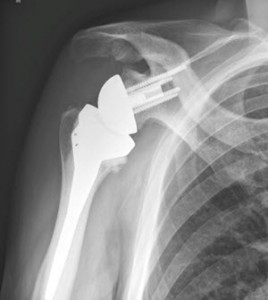 This is useful when you have a body that has lost the parts of the body that are more traditionally used for identification such as the head (and therefore, the teeth) and hands. The examination of the skeleton and x-rays thereof can also reveal unique findings such as healed fractures, orthopedic implements (rods, plates, screws or artificial joints) or anatomical variations that can help determine identity in a definite manner. In the case of implants, both of the orthopedic variety and otherwise (such as breast implants), most of them carry serial numbers that allow them to be traced.
This is useful when you have a body that has lost the parts of the body that are more traditionally used for identification such as the head (and therefore, the teeth) and hands. The examination of the skeleton and x-rays thereof can also reveal unique findings such as healed fractures, orthopedic implements (rods, plates, screws or artificial joints) or anatomical variations that can help determine identity in a definite manner. In the case of implants, both of the orthopedic variety and otherwise (such as breast implants), most of them carry serial numbers that allow them to be traced.
Even the appearance of a particular orthopedic device on a radiograph can be used to determine the identity of an individual. This is forensic radiology, and it is a wonderfully fascinating field with many facets. However, to keep this as brief as possible, I am only going to mention one of the better known radiological techniques used in identification. That is the use of the unique pattern of the sinuses in the face to identify a victim. Just like a fingerprint, the bony confines of the facial sinuses (most notably the frontal sinuses located just above the nose at the level of the eyebrows) are unique from person to person and can yield identification if the victim has previously had an x-ray or CT scan of their head performed.
The above examples are a relatively simplistic review of how you can identify a body from an aircraft crash, and why one should not rush into formally announcing identities of victims. The careful and cautious approach may not be popular in the world of the 24-hour news cycle and the need for information right this second, but some things are too important to be rushed.
In closing, I would like to take a moment to pass along condolences to the family and friends of Mr. Horner. It is important to remember that death is a great equalizer and everyone leaves people behind to grieve for them. I have been in that unwelcome situation- myself far too recently as I lost a close friend in a plane crash earlier this summer- and thus would like to remind everyone to not rush to judgment before we have all the facts for the sake of those now grieving.
Stephen Richey is a former deputy coroner and an aviation crash survivability researcher, soon to be pursuing his masters and doctorate in forensic anthropology. You can follow him on Twitter at @kasrcrashsafety




